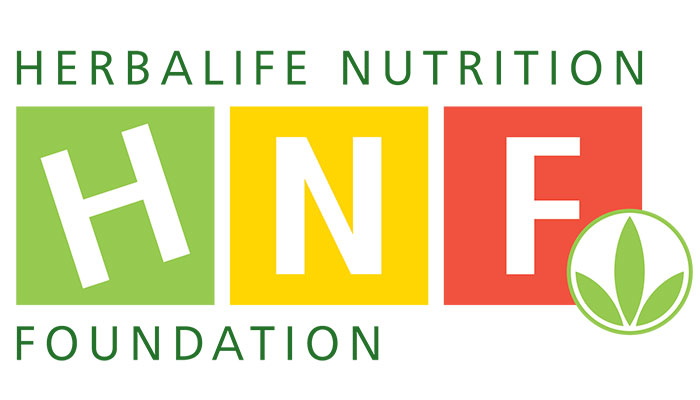You may be surprised that cardiovascular disease is the leading cause of death worldwide [1], but most of these diseases can be prevented by addressing lifestyle-related risk factors such as smoking, overdose. alcohol consumption, lack of exercise (sedentary lifestyle), unhealthy diet and obesity [1].
How can you identify the risks of cardiovascular disease? Some argue that the warning signs appear when it’s too late, but the truth is that high blood pressure, high cholesterol, being overweight or obese may indicate that you need to improve your cardiovascular health [1]. According to research, lowering blood cholesterol levels by 10% can reduce the risk of heart disease by 50% within five years. Unfortunately, statistics show that Europeans do not manage to keep their cholesterol levels healthy, as more than half of adults have high cholesterol. In fact, Europe is the region with the highest rate of high cholesterol in the world.
Although we cannot influence certain risk factors, such as age and family history, we can better protect our heart in many ways: the key is to improve eating habits, exercise regularly, reduce (or stop) smoking. and reducing excessive alcohol consumption [1]. To see them in a little more detail…
Limit the consumption of saturated and trans fats
Saturated fats are the ones that increase the levels of LDL cholesterol the most (which we often call “bad cholesterol” because it is deposited on the walls of blood vessels). Trans fats cause double damage as they increase LDL cholesterol levels and at the same time lower HDL cholesterol levels (which we often call “good cholesterol” because it is linked to a protein that is eventually eliminated from the body through the liver) [3] .
Most trans fats in our diet come from the partially hydrogenated fatty acids used in processed foods [3]. Saturated fats are found in foods of animal origin, such as fatty meats, sausages and whole dairy products. Try to consume the lean / light version of the above foods. In addition, some tropical vegetable oils contain saturated fat, so try to choose those that are high in omega-9 fats (such as olive oil) or those high in omega-3 and omega-6 fats.
Prefer healthy fats
Fat intake should come mainly from foods rich in monounsaturated and polyunsaturated fats, also known as omega-9, omega-6 and omega-3 fatty acids. Omega-9 fats are found mainly in olive oil, almonds and avocados. Some omega-6 fats and omega-3 fats of plant origin help maintain normal blood cholesterol levels. Sources of omega-6 fats include sunflower oil and sunflower seeds, corn oil and soybean oil, as well as various nuts such as pine nuts, pecans and Brazil nuts [7]. Omega-3 fats of plant origin are found in linseed oil, walnuts, chia seeds and flaxseed.
Fish omega-3 fats, also known as EPA (twenty-five pentanoic acid) and DHA (docosahexaenoic acid), have beneficial properties for cardiovascular health. They are found in fatty fish such as herring, salmon and sardines [7] and help maintain normal blood pressure, normal triglyceride levels (certain lipids / fats found in the blood) and normal heart function [8.9] . We can get the most beneficial properties of omega-3 fats from fish by consuming fatty fish once or twice a week, while for some of them it is necessary to consume more. If you don’t really like seafood, you can find these types of omega-3 fatty acids in fish oil supplements.
Make sure you eat plenty of fiber, especially Beta-glucans
You should get at least 25 grams of fiber of all kinds on a daily basis from fruits, vegetables, legumes and whole grains, as part of a healthy and balanced diet [10]. But there is a class of fiber, β-glucans, found in oats and barley, which have been shown to either help maintain normal cholesterol levels or reduce high blood cholesterol levels. For this to happen, you need to take 3 grams of β-sweeteners a day from oats or barley through food or supplements [11-13].
Reduce salt intake
Excessive sodium intake is associated with an increased risk of High blood pressure risk. You should limit your sodium intake to 2 grams per day (or 5 grams of salt per day). This amount includes sodium, which is naturally found in food and added during food preparation, but also what we add when cooking or eating meals. Unfortunately, the average intake is almost double that of the aforementioned ceiling. Hard cheeses, processed meats, snacks, bread and some sauces contain a lot of salt. A good habit you can adopt is to read the food labels on food labels to see how much salt each product contains and thus limit those that contain large amounts of sodium (or salt, depending on the labeling of each country). As a general rule, products containing more than 0.6 grams of sodium (or 1.5 grams of salt) per 100 grams of ready-to-eat food can be considered to have a high sodium content [15]. Another good idea is to use spices and seasonings instead of salt to flavor your food.
Try soy protein
A recent study evaluating 43 clinical trials involving more than 2,600 participants found that consuming about 25 grams of soy protein a day was associated with a reduction in both LDL cholesterol and total cholesterol.
Consume alcohol in moderation
If you like alcoholic beverages, try to consume them in moderation. Do not exceed 10 grams of alcohol per day (for women) and 20 grams (for men) [3]. Roughly, 10 grams of alcohol corresponds to a small glass of beer or a small glass of wine (125 ml).
Maintain a healthy weight
Weight loss will be followed by fatigue and constant tiredness. Weight loss has been shown to reduce the risk of cardiovascular disease.
Adopt a more active lifestyle
Try to do at least 150 minutes of moderate-intensity exercise or 75 minutes of high-intensity exercise a week. Exercise not only reduces the risk of cardiovascular disease, but also strengthens bones and stimulates muscles.
Avoid smoking
Avoid not only active but also passive smoking [3].
As you can see, you can do a lot for your heart health. Of course, you don’t have to start all over again. Set small and achievable goals and, by adopting a small change each time, you will gradually improve your health. Your heart will thank you.
References:
[1] WHO (2017). Cardiovascular diseases (CVDs). (Online). Available at: https://www.who.int/news-room/fact-sheets/detail/cardiovascular-diseases-(cvds) [Accessed on 09 September 2019]
[2] WHO Global Health Observatory (GHO) data (2019). Raised cholesterol (Online) Available at https://www.who.int/gho/ncd/risk_factors/cholesterol_text/en/ [Accessed 09 September 2019]
[3] Catapano AL, et al. 2016 ESC / EAS Guidelines for the Management of Dyslipidaemias. European Heart Journal. 2016. 37, 2999–3058
[4 Mashek DG, Wu C. MUFAs. Adv Nutr. 2015 May 15; 6 (3): 276-7.
[5] EFSA Panel on Dietetic Products, N. and Allergies. Scientific Opinion on the substantiation of health claims related to alpha-linolenic acid and maintenance of normal blood cholesterol concentrations (ID 493) and maintenance of normal blood pressure (ID 625) pursuant to Article 13 (1) of Regulation (EC) No 1924 / 2006. EFSA Journal 2009; 7 (9): 1252
[6] EFSA Panel on Dietetic Products, N. and Allergies. Scientific Opinion on the substantiation of health claims related to linoleic acid and maintenance of normal blood cholesterol concentrations (ID 489) pursuant to Article 13 (1) of Regulation (EC) No 1924/2006. EFSA Journal 2009; 7 (9): 1276
[7] Linus Pauling Institute (2019). Essential Fatty Acids. [Online]. Available at https://lpi.oregonstate.edu/mic/other-nutrients/essential-fatty-acids#food-sources (Accessed: 09 September 2019).
[8] EFSA Panel on Dietetic Products, N. and Allergies. Scientific Opinion on the substantiation of health claims related to EPA, DHA, DPA and maintenance of normal blood pressure (ID 502), maintenance of normal HDL-cholesterol concentrations (ID 515), maintenance of normal (fasting) blood concentrations of triglycerides (ID 517), maintenance of normal LDL-cholesterol concentrations (ID 528, 698) and maintenance of joints (ID 503, 505, 507, 511, 518, 524, 526, 536, 535, 537) pursuant to Article 13 (1) of Regulation ( EC) No 1924/2006. EFSA Journal 2009; 7 (9): 1263.
[9] EFSA Panel on Dietetic Products, N. and Allergies. Scientific Opinion on the substantiation of health claims related to eicosapentaenoic acid (EPA), docosahexaenoic acid (DHA), docosapentaenoic acid (DPA) and maintenance of nor






